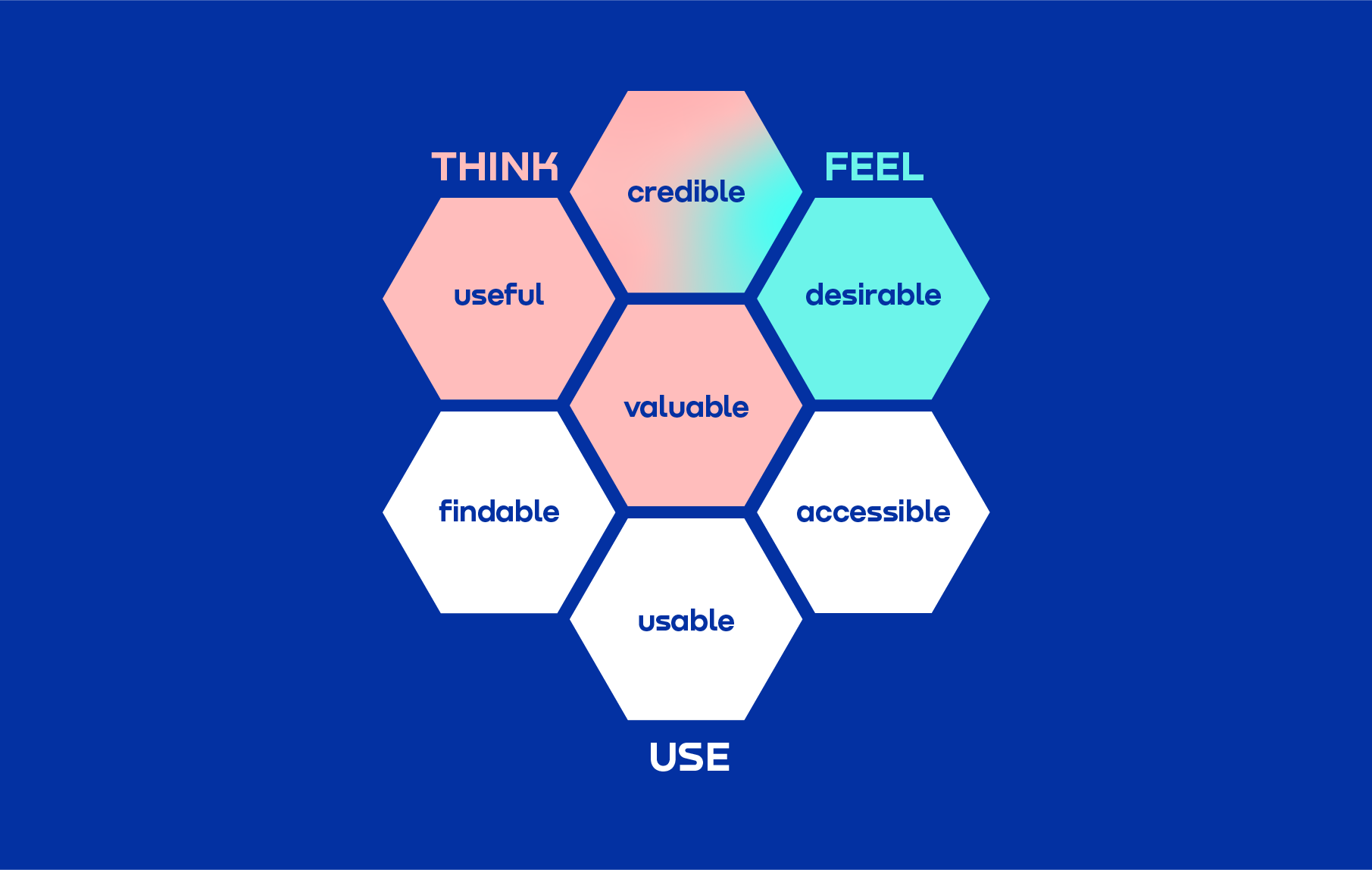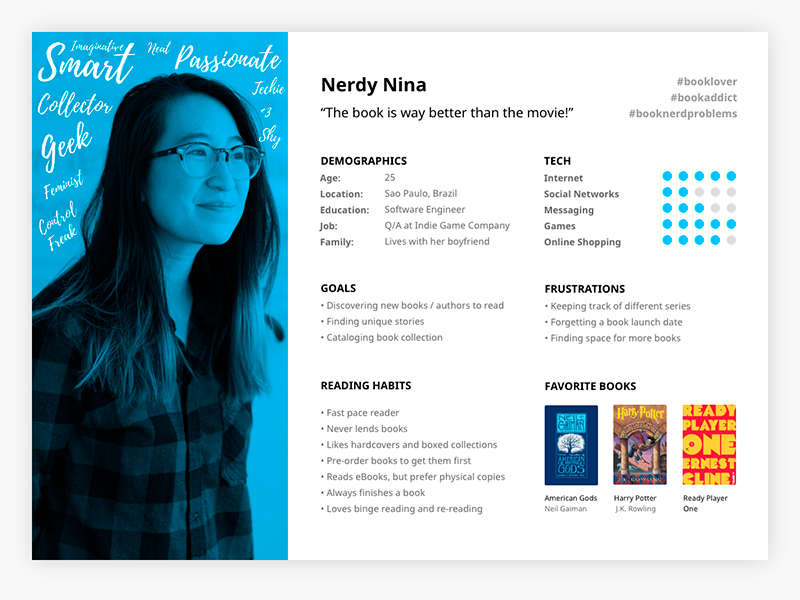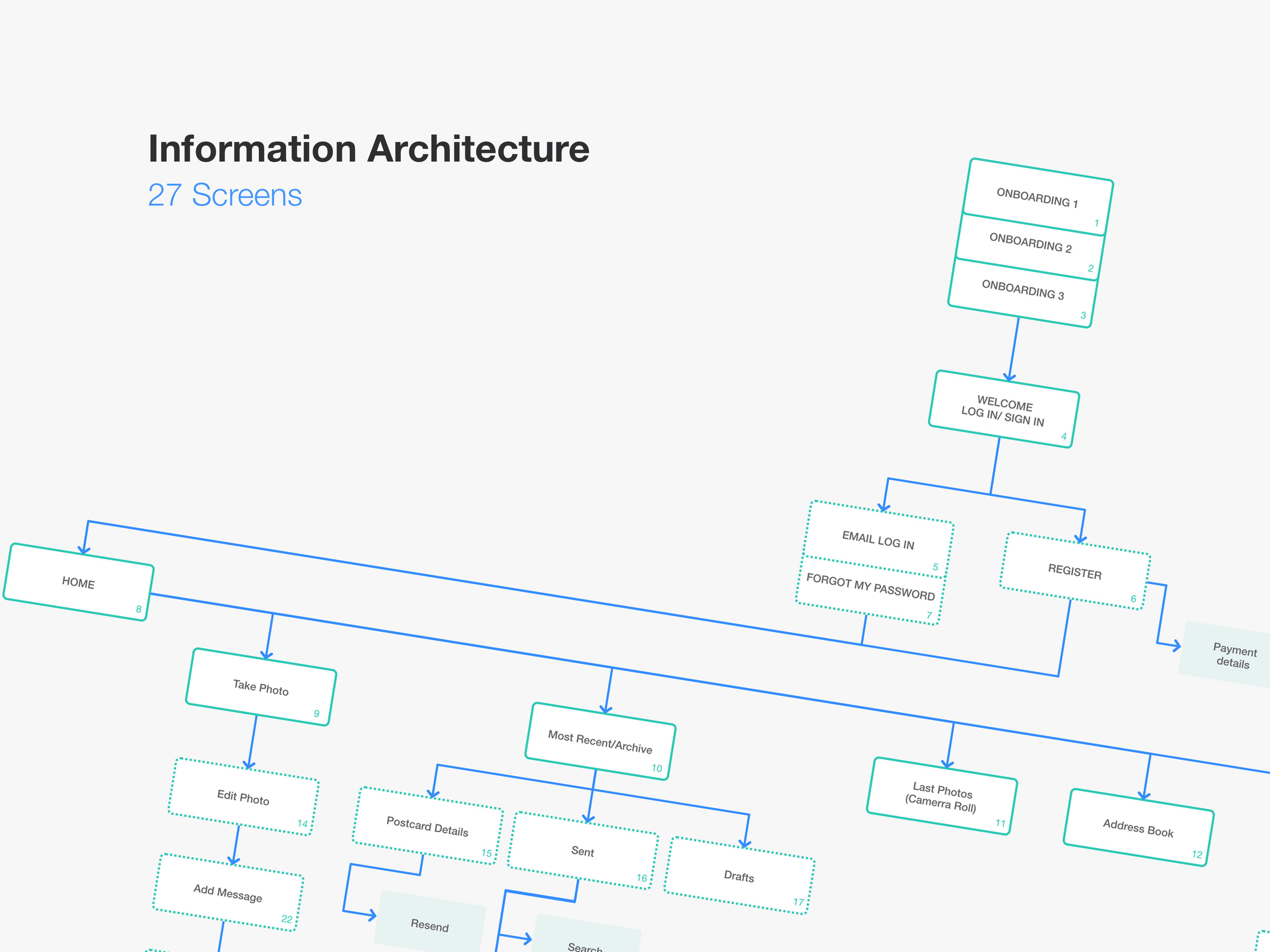- MAIN PAGE
- – elvtr magazine – WHAT DOES A UX DESIGNER DO & HOW TO BECOME ONE
WHAT DOES A UX DESIGNER DO & HOW TO BECOME ONE

Introduction – or what is UX design?
To understand what user experience designers do, you should first be clear on what is a UX.
User experience or UX is short for all interactions that a consumer has with a product or a service. It is a place where the design meets users’ needs, abilities, and limitations.
Let’s just say that a lot of thought is put into making this experience seamless. A UX designer must think of all potential touchpoints between a user and a product. This includes phases like inquiring, purchasing, using the product, enjoying different functions, durability, quality, becoming and staying loyal, etc.
According to Peter Morville, a UX pioneer, user experience design is excellent if it consists of 7 key elements: useful, usable, findable, credible, desirable, accessible, and valuable.
Instead of discussing them in detail, think for a moment about the UX that brands like Google, WhatsApp, or Airbnb create for their users. Their products and designs are so ingrained in our everyday lives that it almost seems like that’s what UX is about.
Now, let’s discover:
What is a UX designer?
Role of a UX designer
All paths may lead to Rome, but many of them will also get you to UX. It’s a highly multidisciplinary field. UX designers’ backgrounds can vary from visual design, graphic design, programming, psychology to information architecture and interaction design.
Just as backgrounds differ, it’s the same with the day-to-day tasks of a UX designer. The most typical ones include user research, creating personas, designing wireframes and interactive prototypes as well as testing designs.
Basically, a role of a UX designer is centered around users and keeping them at the core of all design and development endeavors. They are generalists that take responsibility for the entire process from understanding user behavior to execution and testing.
Finally, not every role of a UX designer is the same. There is a wide range of positions, all with distinct opportunities, challenges, and progress routes. Some of the most familiar ones include: UX Designer, UX Researcher, Product Designer, User Interface Designer, UX Writer/Strategist.
Or you can study UX/UI for gaming and land a job in your dream game studio. Learn how to create wireframes, mockups, and vital UI elements on live online course UX/UI for Gaming from Ivy Sang, UX/UI Lead from Blizzard and ex-Electronic Arts.
Qualifications and training you need to become a UX designer
To land a user experience designer job, you might not even need a degree in that area. It’s actually quite common that a UX designer is not University educated in UX specifically. This has a lot to do with the fact that UX is a fairly new field with not so many UX programs out there.
However, backgrounds in coding, motion/interaction design, and information architecture are the ones most close to UX design.
Bottom line, UX requires you to understand people's behavior and the technology behind building apps and websites. That’s why you are best off with a combination of social (psychology, sociology, etc.) and natural (programming, design, etc.) sciences. Alternatively, UX certifications or starting a design role similar to UX and later specializing are also clever paths into the industry.
Skills
List of standard requirements from job ads:
- Design thinking, user empathy, UX research, ideation
- Creating information architecture, wireframes, prototypes, user journeys, user flows
- UI design, brand design, visual design, interaction design
- Collaboration, communication
- Knowledge of UX design tools such as Figma, Invision, Sketch, Balsamiq, etc.
Typical employers of UX designers
In the UX design field, you can ride solo, be a part of a UX agency, or work for an employer in a specific industry. Some of the most typical employers of UX designers are:
- Financial services organizations
- Manufacturing companies
- Educational institutions
- Banks
- Specialist software development companies
- Consulting firms
- Telecommunications companies
- Public sector organizations
Demand and salaries
According to the US Bureau of Labour Statistics, job opportunities for UX designers should grow by 8% in the coming years. Salaries-wise, in US UX designers are earning a median salary of $75,000. It is also found that 10% of designers are earning more than $109,000. Another good news is that 84% of product designers had a salary increase in the last 1-2 years.
What do user experience designers do?
User research
The ultimate goal of user experience design is to understand the user needs to create the optimal product or service. Therefore, user research is the foundation of any good UX. It is based on similar principles like customer research for marketing purposes – with findings being put to a different use.
For instance, if your product is an online tool for converting, merging and editing documents, you clearly want to know what type of file formats your target audience uses the most. Is it PDF, Word, Excel, all of them, or something entirely else? What formats do they create in and what formats do they need their files converted to? What editing options would they be interested in? What processing speed would satisfy them?
With insights like these, a direction towards creating a product your customers will crave for becomes much clearer.
The information in user research is normally gathered through online surveys, interviews, focus groups, and competitive analysis. Once this phase is completed, UX designers analyze the data, create personas, and make product development decisions based on their findings.
Persona development
Based on the collected data from the previous step, UX designers create user personas.
Personas are representations of real users with names, fears, needs, goals and so much more. It means they are not just fictions based on assumptions, they are derived from the real data collected in the user research phase.
Credit: Dani Guerrato, UX Persona for Book App
The latter is what makes personas a truly effective design and communication tool.
Job done well here helps designers shape the product strategy. Once the user behavior is understood and their needs recognized, it’s possible to define who a product is being created for and what is necessary or unnecessary for its success.
Furthermore, it allows product teams to prioritize feature requests (e.g. think again about the online tool for converting, merging, and editing documents).
On the other hand, without personas there are two specific risks:
- not designing for a user, but for the designer himself/herself
- designing for a general user with no specifics in mind
Information Architecture (IA)
By definition, information architecture relates to organizing and labeling data effectively and sustainably. In terms of UX, it is the ideation of a structure for a website or an app that allows users to navigate it naturally.
Credit: Pedro Aires, Information Architecture of a Mobile App
A site should have a clear menu, categories, subcategories, interactive forms, and be well connected with internal links. This will help users immensely to move around and know where they are at all times.
With a quality information structure sketch, UX designers are ready for some real action.
Wireframing
Wireframing is a crucial step for turning a digital product into reality. It’s basically a snapshot of every possible step a user can make while exploring a website or an app.
The goal is not to exaggerate with details, but to create a skeleton for each screen in the design. Almost like a blueprint of a building.
Credit: Adam Kalin, Earth Tribe Wireframes
Wireframing is thus a simple visual representation that enables developers to create the envisioned product in a step-by-step manner. Moreover, users benefit from wireframing as its core focus is the layout of the page and user interaction with the pages items.
Prototyping
Prototyping is wireframing on a bigger scale.
Wireframing is a method more soothed for the ideation phase and is usually done on paper or within simple drawing tools. On the other hand, prototyping takes a lot more time and resources. It is an interactive in-depth sketch of the design and functionalities, which makes it much closer to an end product.
Being so close to the real thing also makes prototypes a great solution for user testing.
For a better idea of the two key UX methods, check out their main differences:
User testing
After creation comes validation. Testing can help designers understand what went well and what didn’t with their UX design. The best part about user testing is that it’s done on real users and their behavior with the product.
Most common user testing methods include: guerilla testing, moderated lab usability testing, unmoderated remote usability testing, interviews, interaction session recording.
How to become a UX designer?
Hopefully, the above discussion brought you closer to an understanding of what a UX designer does.
If you’re also wondering how to become a UX designer, even better.
Keep in mind that most companies are expanding their businesses online in an attempt to reach a wider audience. This increases competition and forces companies to always search for new ways to impress their users. It is where UX designers come into play.
For starters, a rise in demand will create more opportunities for newcomers in this field.
If you are one of them, here are also some quick tips for kickstarting your career:
- read UX related materials
- work on people and design skills
- get to know UX design tools
- get training and certification
- get experience with entry-level jobs
- build your personal brand and portfolio.






